levture 9: bridging the divide
goal lecture
build bridges between political economy and cultural studies in media and communications
understand relation between agency and structure as well as conflict and consensus in media and communications
structuration theory (Giddens)
structure
social systems: structure the way in which resources are produced, distributed and used in society
structure: rules and resources
they constrain human action, because our access to resources are conditioned by the system
they enable our actions to produce resources (that we can use to change the system
two sides of a coin
system provides resources for action (= enabling + constraining)
structure looked at as organisation of access to social resources
resources
social sciences generally distinguishes between economic, political and cultural (sub)systems and resources as main constituents of society
access to resources is (historically)structures in certain ways → point of discussion viewpoints Marxist and non-Marxist
power
structuration theory approaches problem agency in terms of power. Power seen as our capacity to exert influence on situations (people or things)
non-Marxist: emphasis on human autonomy
Marxist: access to resources always unequal. structure/power/access to resources articulated in dominance
different approach exemplified by use different terminology:
economic resources - means of production
social resources - means of coercion
symbolic resources - means of persuasion
how does structuration work
to what extend are we producing the system, or are we being shaped by it?
relation agency-structure captured by concept of structuration: the day to day (unconscious) repetition of the acts of individual agents which reproduces the structure
Giddens: practical consciousness → we are generally unaware of our actions and their effects, but we can become aware of them
economic structuration?
concept of structuration (agency + structure) allows us to avoid the pitfalls of structural determinism and economic reductionism in Marxist theory
but structuration theory doesn’t say anything about the articulation economy, politics and culture and a fortiori of the determination by the economic
to what extent can economy be said to structure society
determination in the first instance
materially - economy provides the material base of existence. Economic surplus needed for the development of political and cultural institutions
ideologically - the economic organisation of society requires certain perceptions/way of thinking, which becomes dominant in society
systematically - because our economy is our primary form of social organisation, our political and cultural institutions need to be compatible with the economic organisation
field theory (Bourdieu)
capital(s)
Bourdieu’s field theory offers further integration of structure/agency dilemma and political econom
notions of capital
economic capital
cultural capital
social capital
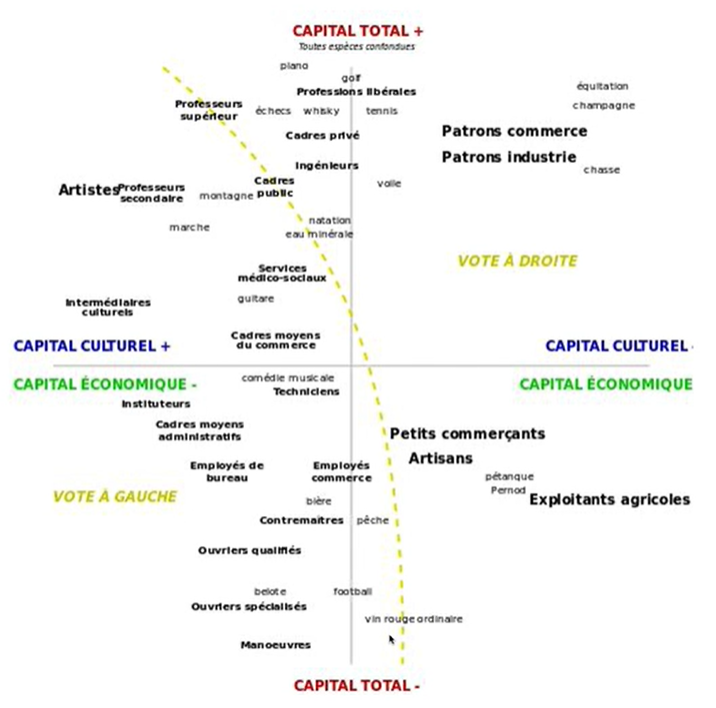
tension fields
many different sorts: religion, race, gender ….
different levels: society, organizations, family …
simplified with two dimensions
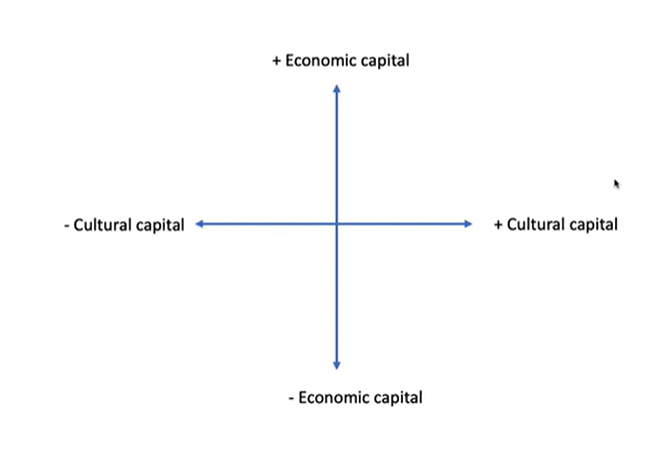
habitus
mental schemes that shap people’s perception and attitudes
Bourdieu describes them as
structured structures: our mental structures are shaped by social structures
structuring structures: our mental structures structure our day-to-day-behaviour
bridging with cultural studies
Giddens more action-theorist than Bourdieu. Habitus much structurally determined and much more deeply socially embedded than practical consciousness
bourdieu’s notion habitus connects realm social structures with individual mental structures and in this sense provides bridge with cultural studies
schemata theory
habitus as mental schemes
structureds structures
structuring structures
what are schemata?
mental structures consisting of information categories and connections between them
simplified: concepts and relations between them
resonance: highly resonating information is more likely to be recignised, assimilated and remembered than lowly resonating information
schemata are learned, accumulate experience
we use schemate to access new situation or predict behaviour
schematic inference
schemata offer guidance: people routinely use schemata to fill in missing or ambiguous information
schematic projection
schemate can be deceptive: people also project information by inference with existing mental schemata
for example stereotypes: schemata based on incomplete information
perceptual cycle
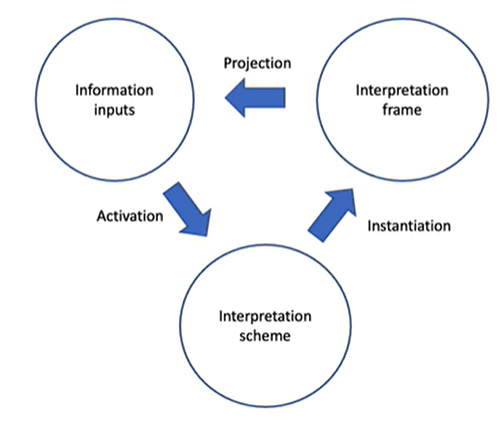
Stuart Hall revisited
psychological definition of cultura: culture has material existence in artefacts, in social practices and memory traces but is only effective in the mind
what is culture? culture is outcome structuration process in which individual mental structures and symbolic structures recursively shape each other
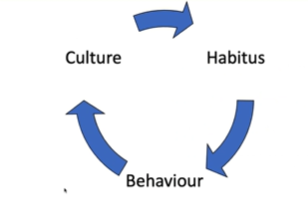

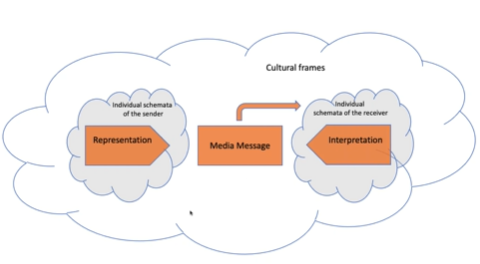
structuration through communications
institutional information and communication: highly structures
interpersonal information, including via electronic networks: more or less structured
situational information may be more random, but will still be structured
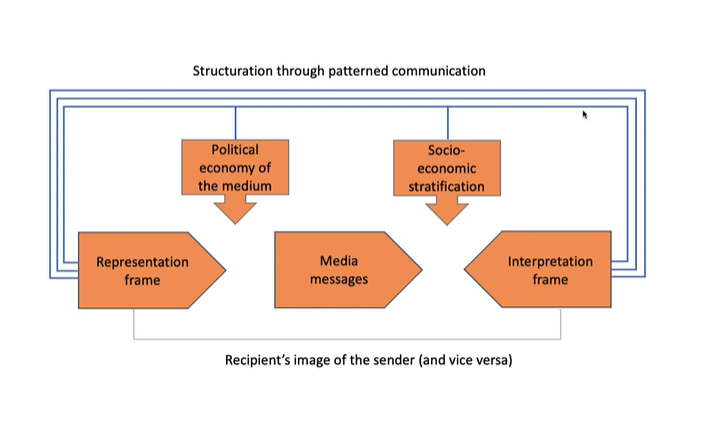
role media? dominant media both intentionally and unintentionally contribute to reproduce a social structure articulated in dominance (hegemony)